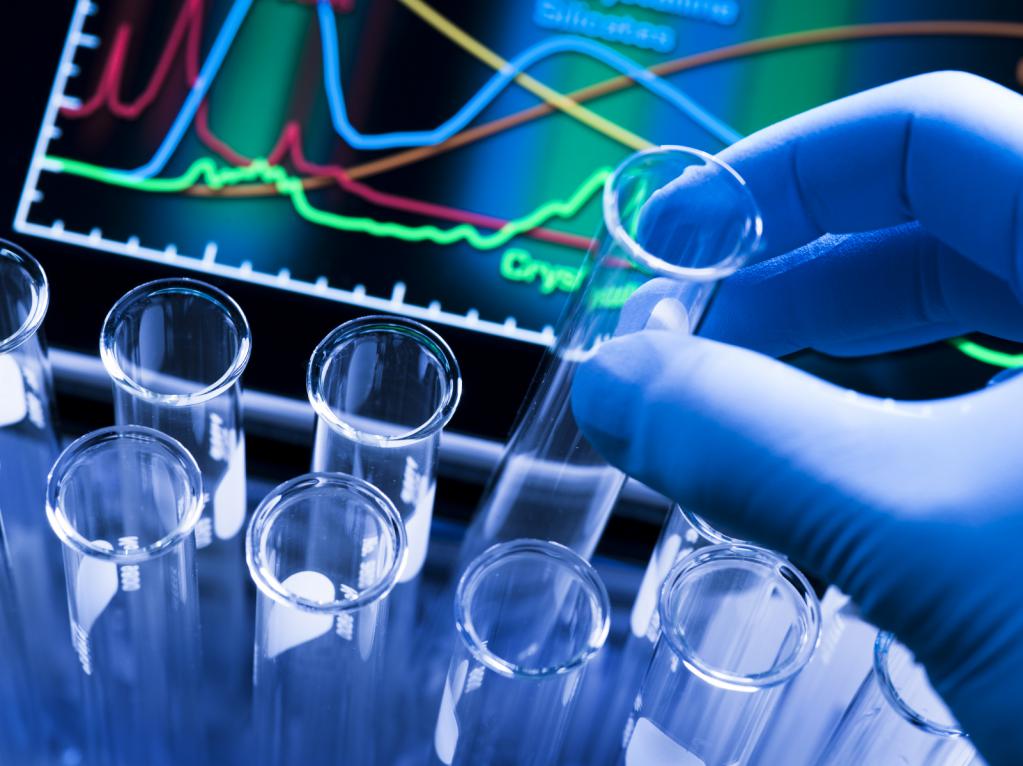A forensic biological examination is carried out in cases where there are grounds for suspicion against third parties of their involvement in death or other criminal acts. An act of ordering an investigation is concluded with respect to harm to a person or in case of death. When the body could not be identified or certified, a document is drawn up stating death due to health reasons. Next, an autopsy is performed to study the details.
The science of methods that can be applied to solve complex crime issues is constantly evolving. The main principle of forensic biological examination - “every contact leaves a mark” - is a prescription used to provide information from the analysis of evidence that will help establish the guilt or innocence of related parties. At the crime scene, all relevant evidence such as murder weapons, biological samples, cigarette butts, hairs and fibers are documented, recorded, photographed, packaged and labeled. Then they enter the forensic laboratory for scientific examination and analysis. A forensic biological examination of the hair, tissues and other particles that were found during the investigation is being conducted.
Evidence base collection
Entomological data found at the crime scene, such as colonization of human bodies with specific invertebrates, can help establish the time of death and prove vital in convicting a guilty person who does not have an alibi for that specific time. A forensic biological medical examination is aimed at proving a person’s involvement in an act against the life or health of another person.
Forensic anthropological analysis of human remains can not only establish the estimated time of death, which will become apparent after opening and studying the nature of tissue decomposition, but also determine the sex, age, ethnicity and age of the deceased, and therefore, identify the person. No other method will be so effective. For example, dental forensic records provide an identification of a person in forensic dentistry.
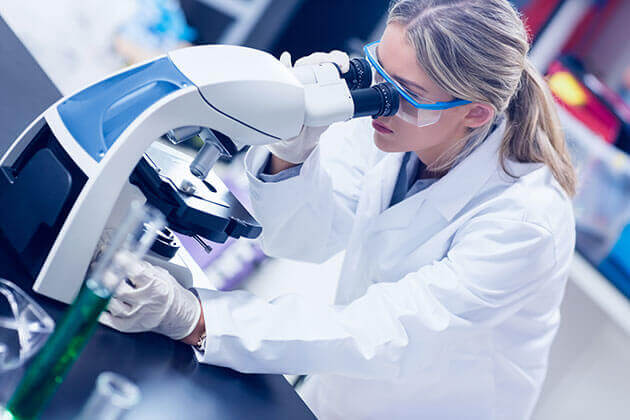
Even animal and plant material can provide vital evidence in a criminal investigation. Of particular value are trace elements such as pollen, which helps to establish the geographical origin of illegal drugs or plant matter. This often leads to the identification of the crime scene, for example, where the victim’s body was moved from. Forensicbiological medical Examination is also carried out in relation to particles of mineral origin - this is usually the evidence base regarding the place of the murder or the harm.
Thanks to the study of entomology, palynology, molecular biology, genetics, human anatomy and physiology, knowledge is being developed in the field of forensic diagnostics, collecting and processing evidence, and laboratory analytical methods. The medical examiner monitors technological advances, such as the analysis of biological samples, and provides important information for criminal investigations and evidence during the examination.
Forensic Science Laboratory: How Does It Work?
The forensic department carries out serological and DNA analyzes of physiological fluids in order to identify and individualize. Typical material that is commonly investigated includes:
- blood,
- sperm
- saliva
- dental mass collected at crime scenes and from evidence.
These types of body fluids are often generated during violent crimes such as murder, rape, assault, as well as those that led to deaths. The ultimate goal of a forensic examination is to determine what type of material is present, and then, using DNA analysis, bind this material to a specific person.
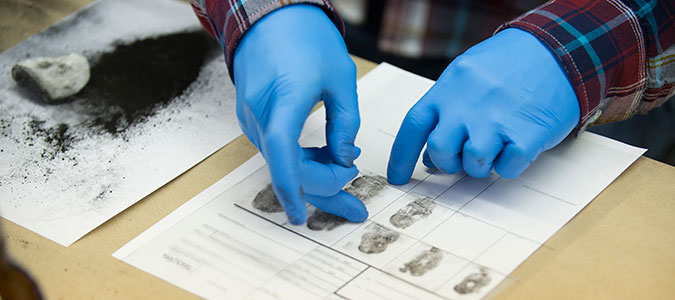
The Department of Forensic Biology analyzes approximately 600 cases per year from over 50 different law enforcement agencies. Personnel from this unit conduct laboratory tests on samples submitted by police and law enforcement agencies, and also assist in the investigation of crimes. The appointment of a forensic biological examination is possible only after the institution of the case, on the basis of which the process of research and study of all aspects of the crime takes place.
Biological evidence: fact or indirect evidence of crime?
After collecting biological evidence, the drugs are stored in a reliable refrigerator, waiting for analysis. The expert brings material evidence to the verification room for a forensic biological examination, where they are documented and analyzed. An alternative light source is used to detect stains that may contain blood, sperm, or saliva. These spots will pass a series of presumptive screening tests. If these traces are positive at this stage of the analysis, they will be subjected to more extensive research, including confirmatory analysis and DNA testing. Data from a recent study obtained from these spots will be compared with possible known samples.
Forensic biological examination of material evidence as a source of evidence
The Department of Forensic Biology performs DNA analysis. It has its advantages: it takes a little time, is characterized by a high degree of discrimination, and makes it possible to analyze even the smallest and damaged DNA samples. Even particles of skin under the victim’s nails or hairs adhering to the victim’s clothing can serve as evidence.
The laboratories currently use three separate capillary analyzers:
- ABI 310.
- ABI 3130 high-performance multi-capillary genetic analyzer for DNA analysis.
- In addition to the analysis of autosomal DNA, the laboratory also analyzes the STR analysis of the Y-sex chromosome, which is found only in men.
The latter type of forensic examination of evidence of biological origin is useful in investigating cases of sexual violence in which males are involved.
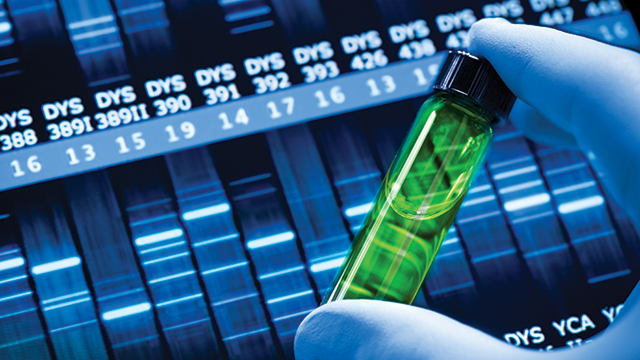
After obtaining the DNA data, the alleged offender can be searched in local, state, and national law enforcement databases. The Department of the Study of Forensic Biological Expertise in Forensic Biology is connected to a network of a database of DNA and DNA DNA codes of the police. Through this network, the laboratory can take an unknown sample and compare it with other “unresolved” cases in open cases throughout the country. This technique allows researchers from different jurisdictions to work on cases of a serial type, as well as to exchange important information about investigations at earlier stages.
Crime scene analysis and evidence-gathering activities
In addition to conducting analytical tests using modern DNA technologies, forensic biology sections provide services to law enforcement agencies investigating crimes.A decision is being made on the appointment of a forensic biological examination for the entire police department, and on the basis of the order, the forensic laboratory will provide personnel to travel to the crime scene to assist in identifying and collecting other biological evidence at the scene.
The laboratory can send employees trained in the use of alternative light sources to work outside the laboratory and chemical improvement methods for detecting blood and other body fluids, if necessary. In addition, there are staff in the laboratory who can examine blood samples and provide research information on how these samples could be generated.
Toxicology of poisons in judicial practice
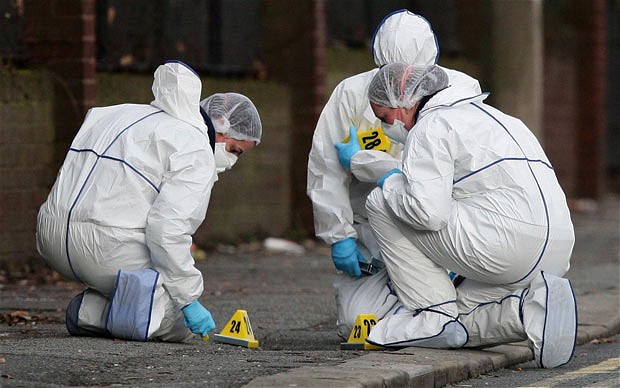
Forensic toxicology is the science of impurities in the blood. Since the name refers to the detection of poisons and other toxic substances involved in laboratory tests, a biological forensic examination of the blood is also carried out to determine the causes of death, when the suspicion falls on the case of poisoning of the face.
In those situations where death is considered the result of exposure to certain drugs or poisons, then other physiological fluids, such as vomiting, feces, substances obtained by gastric lavage and other excreted compounds, are examined. All this allows us to find out the reality of the entire incident. In toxicology, the main aspects are determining the route of administration of poison or drugs, the medical and legal aspect of poisoning, signs and symptoms associated with poison.
The work of the Department of Forensic Biology and Toxicology is to preserve the integrity of evidence by taking appropriate measures to avoid possible contamination. Biological evidence, which is very delicate in nature, must be collected and preserved by an appropriate method: since any contamination associated with biological or toxicological evidence may interfere with the legal proceedings.
When blood occurs at the crime scene, the first and main task of the researcher is to determine whether it belongs to an animal or a person. This allows you to determine whether a particular spot at the crime scene is evidence or not.
Investigation of saliva - new accurate data for disclosing the fact of a crime
Saliva testing is part of a routine crime scene investigation and analysis. Dishes, a cigarette, leftovers, wine glasses and signs of bites are all under investigation, especially in cases of sexual abuse. Saliva can serve as an enormous source of DNA and, therefore, is crucial as evidence in forensic science. A sample order for the appointment of a biological forensic examination, as a rule, is issued to all employees who have access to examine a body or a living person.
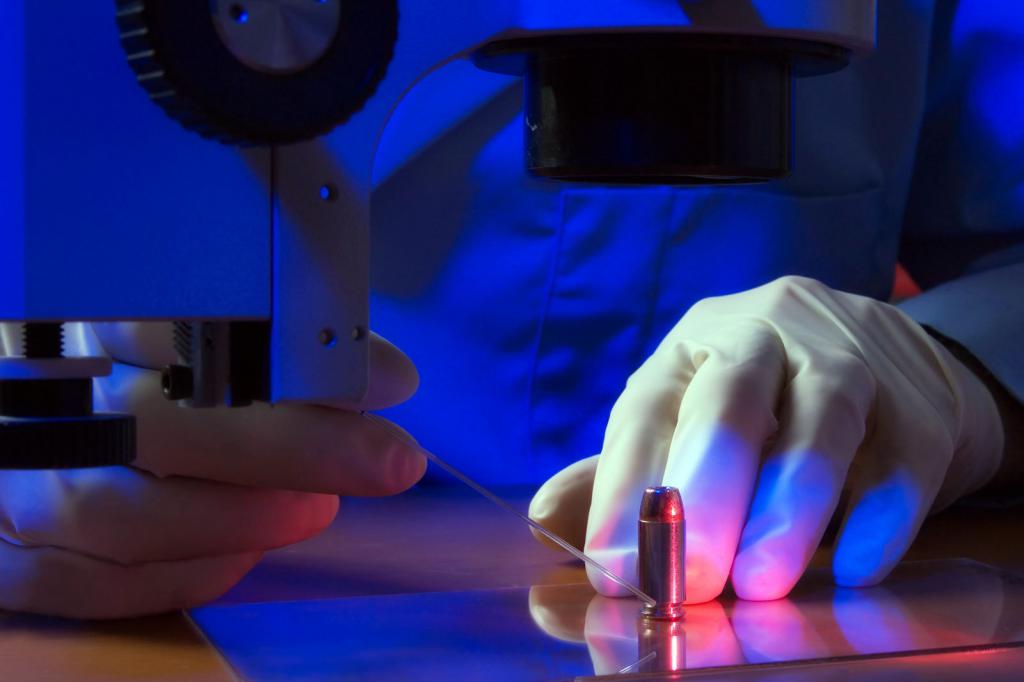
In the course of the research, data are filled in by both morgue workers and police officers. Saliva can be very variable in terms of composition, especially due to recent eating or even accumulation time after death. Usually, it consists of water, as well as electrolytes, epithelial cells, mucus, proteins, enzymes, and various exogenous and endogenous metabolites.
Unfortunately, significantly fewer methods are provided for identifying saliva. The most widely used type of presumptive testing is based on the presence of amylase, an enzyme found in various body fluids, but present in large quantities in saliva. The starch and iodine test will cause the control fluid to turn blue when it comes in contact with saliva. And in the presence of starch in it, we can say for sure when amylase cleavage began. Similarly, testing is carried out when the color changes during hydrolysis.All analyzes are carried out in the laboratory when it is necessary to establish the identity of the victim or the cause of death, as well as at the crime scene when collecting data about the victims.
This point is also important in cases of poisoning with exotic products that decompose and contain poisons in their tissues. Therefore, there is a study of food samples or animal cells. The methodology for conducting forensic biological examinations of crabs, fish and other marine products is often associated with the identification of poisonous cells that caused poisoning. As a result, the places where the products were prepared, where they were stored or transported are checked. Such cases are called in forensic biology indirect evidence of human error.
Examination of urine during examination of a corpse
Urine is a complex body fluid that is detected and usually fluoresces under alternative light sources, but the fact that it is usually very diluted makes it difficult to create a sufficiently sensitive and reliable test.
Some developed putative urine tests are based on the presence of urea, an organic compound found in urine in high concentrations. This type of presumptive test is often based on enzymatic urease, which enters the urea, with the release of ammonia and carbon dioxide in the process. The test is perhaps one of the most common methods for detecting urine based on the presence of urea, and the color will be pink or purple if the test is positive.
Creatinine is another compound found in high concentrations in urine. The test uses picric acid, which in the presence of creatinine forms a red compound known as creatinine picrate. The color change is proportional to the concentration of creatinine present. Similarly, testing gives a blue color in the presence of urine due to the reaction between sodium nitroprusside and creatinine when heated. Finally, an RSID immunological test was also designed to detect urine based on the presence of urinary protein, known as the Tamm-Horsfall protein.
Seminal fluid analysis for crime research
Seed is a viscous fluid secreted by the testis containing many components, including sugars, enzymes, lipids, and, of course, sperm. In the forensic context, the presence of sperm is of particular importance in the study of sexual assaults, so it is clear that a wide range of tests have been developed for its alleged and confirming identification after ALS imaging.
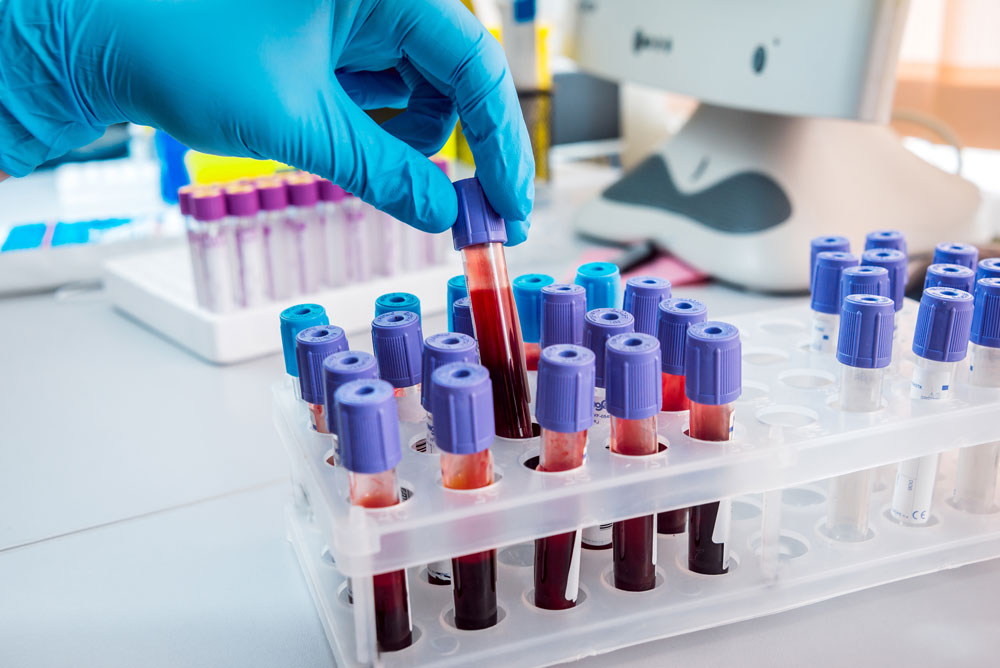
Tests designed to identify sperm are largely based on the presence of certain enzymes. The most common ones are aimed at detecting acid phosphatase, an enzyme produced in large quantities by the prostate gland, which leads to the observed color change if the analysis is positive. Unfortunately, this test can also interact with vaginal acid phosphatase, which leads to false data. Therefore, the appointment of a forensic biological examination in this area takes place only in cases where a person remains alive after an attack or rape. Other tests have been developed based on the detection of other enzymes, such as the leucinaminopeptidase test, but are not commonly used.
Confirmation that the sample is sperm can usually be achieved using simple microscopy to identify the presence of sperm, typically using a method that allows visualization of sperm cell heads. Of course, in some situations this test is useless, for example, if the donor had a vasectomy or if his seminal fluid is azoospermic (in some cases, the sperm does not contain active cells).If so, additional tests are available to help identify the sample.
Numerous commercially available test kits are based on the detection of a prostate-specific antigen (PSA), however, it is understood that male urine produces false-positive results. This is known all over the world, there are even publicly available samples of a forensic biological examination, which has a negative review. Another immunological method is the rapid test for identification of sperm particles, based on the detection of semenogelin, a primary protein in human seminal fluid. This study is conducted out of court, forced against the offender. A similar forensic examination of biological evidence of the material type is possible after an initial examination of the body or after providing data on the removal of beatings and traces of violence.
Vaginal fluid as a “ciliated” effect in evidence of violence
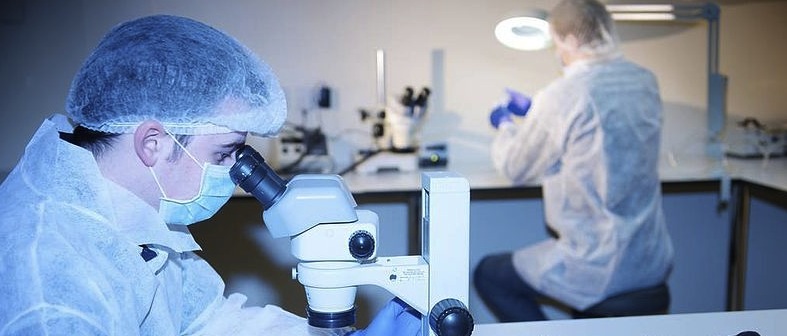
Vaginal discharge may consist of a mixture of fluid secreted through the walls of the vagina, cervical mucus and residual urine. Although this particular body fluid is not commonly found in most crime scenes, it can be vital in investigating cases of sexual abuse. Unfortunately, the development of means for identifying vaginal secretions has proved difficult, especially in that the chemical composition of this physiological fluid can change throughout the entire menstrual cycle.
The most common method is based on the detection of glycogenized epithelial cells using a periodic Schiff acid reagent, as a result of which they are colored in purple. The intensity of this color is related to the concentration of the cells present. Some older methods were based on the presence of certain enzymes, such as vaginal peptidase and lactate dehydrogenase, but these tests are not widely used. Research and forensic science questions are also aimed at developing methods for identifying vaginal secrets based on the levels of specific bacteria and RNA profiling, but as it turned out, a reliable method has not yet been obtained.
The main problem of all the alleged tests is the lack of specificity, since studies often show a reaction to various substances, and false results are a problem for the development of the investigation. In addition, some of the tests are not particularly sensitive, so a small amount of liquid can lead to false data, which is unacceptable, because a forensic biological examination during rape should indicate a specific person, providing data (strong evidence). Finally, prospective and confirmatory tests tend to destroy the sample, which is obviously not ideal if, in the first place, only a small amount of evidence is available.
Based on the conclusions of medical examinations, you can accurately find out the causes and factors that influenced the course of the investigation of crimes against human life and health. Thanks to technology, it can be established whether there was a violent or natural death, whether actions were taken against the will of the victim.
